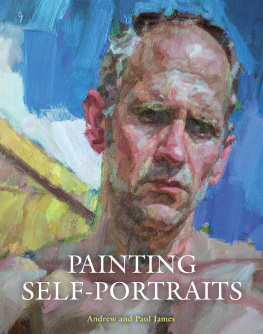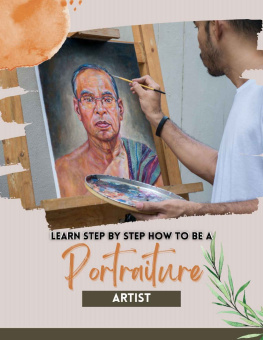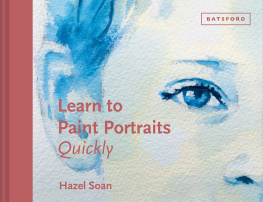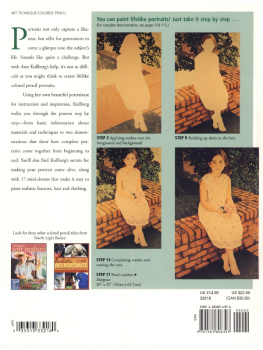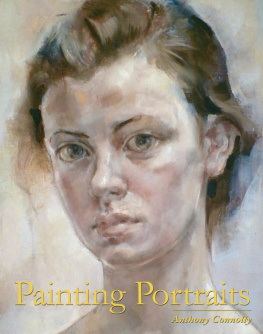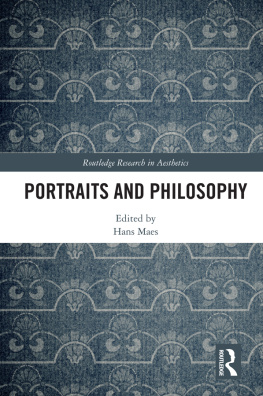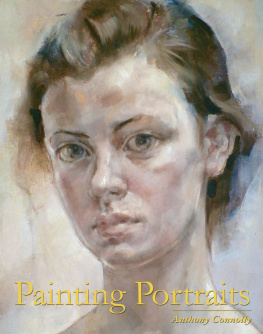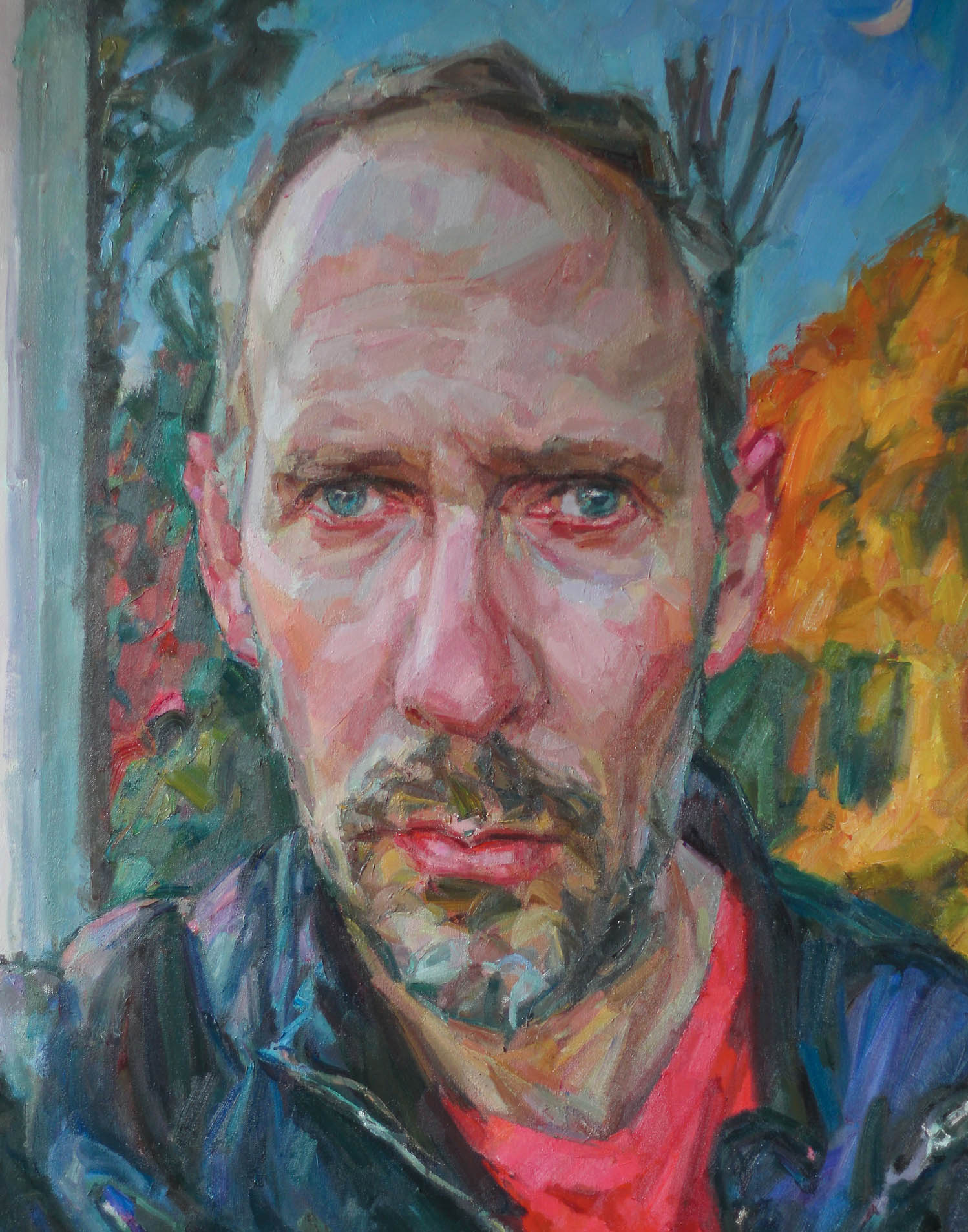
Self-portrait with Moon, 2012. (Oil on canvas, 102 76)
PAINTING
SELF-PORTRAITS
PAINTING
SELF-PORTRAITS
Andrew and Paul James

THE CROWOOD PRESS
First published in 2015 by
The Crowood Press Ltd
Ramsbury, Marlborough
Wiltshire SN8 2HR
www.crowood.com
This e-book first published in 2015
Andrew and Paul James 2015
All rights reserved. No part of this publication may be reproduced or transmitted in any form or by any means, electronic or mechanical, including photocopy, recording, or any information storage and retrieval system, without permission in writing from the publishers.
British Library Cataloguing-in-Publication Data
A catalogue record for this book is available from the British Library.
ISBN 978 1 78500 050 8
Dedication
To Derly, Paula, Mum and Dad, for all your loving support.
CONTENTS
INTRODUCTION
We are all romantics looking for unity and meaning in a unified world.
Johan Wolfgang von Goethe (17491832)
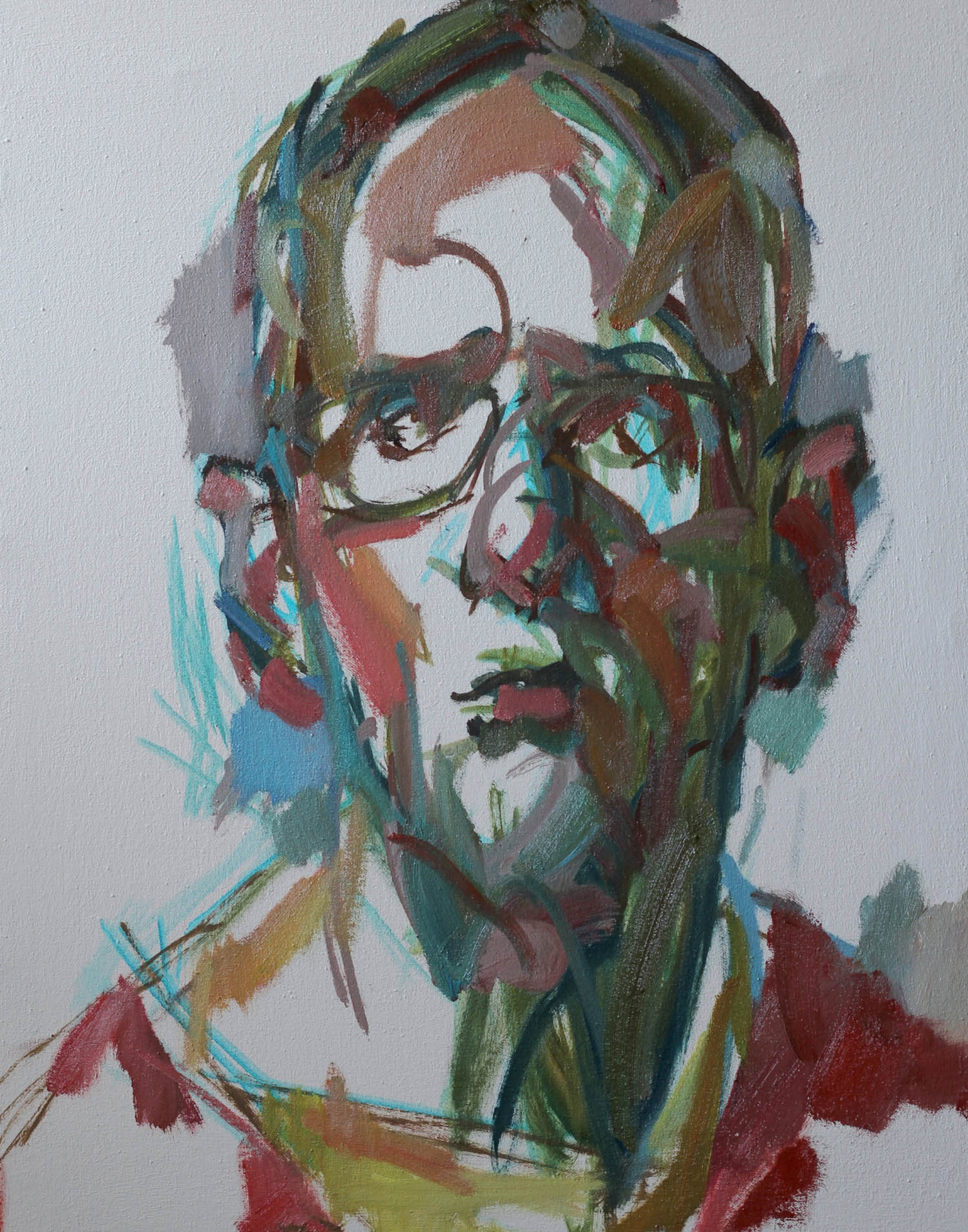
Laying in some colour in the early stages of a self-portrait.
Introduction by Andrew James
How apt the above quote seems when understood in the modern context of the self and the self-portrait. As is so often stated these days and quite possibly very fairly, any remaining claims made to a notion of the unified self are erroneous, and we are, to all intents and purposes, a bundle of nerve endings and multiple narratives: we are disbelievers in the reality of self. Unity eludes us.
Whether this notion of our real self is true or not, Goethe is surely on to something very important. The evidence of our true interests and passions appears to lie contrarily beyond the scientific notion of the fragmented self. Our human condition compels us to seek a coherent and meaningful description of ourselves, none more so than in the art of self-portraiture. Throughout the ages and up to the present day, artists have passionately undertaken this form of visual analysis to rigorously experience and describe, amongst other things, who they are, all the while looking to gain a deeper understanding of our collective condition, and, who knows, ultimately a meaningful sense of unity itself.
From the artists viewpoint, self-portraiture can be considered as the greatest of utilities, a readymade subject, ever-present and usually willing, rich in limitless complexity if the artist wishes to exploit it thus. Alternatively, the artist may wish to view self-portraiture as a value-free object, denuded of its putative psychological meaning. Once free of its cloak of subjectivity, it allows the artist free rein to practise techniques and aesthetic approaches, no matter how strange or initially unpromising, bestowing, much as a mannequin might to the tailor, an artistic freedom to clothe his or her subject in any style or treatment. It is a luxury that is rare indeed for the painter of portraits, so often constrained by the formalities demanded by that difficult discipline.
Although rarely discussed, the subject of the self-portraiture itself can be seen as a questionable category, and not as obviously separate from full blown portraiture as it might at first appear. Once the subject becomes object as it often does the whole notion of self-portraiture can dissolve away, resembling, because of an untapped use of the unique material of self-analysis, just another portrait. Whether just a notional category or minor sub-division to its grander relation portraiture, the merit of self-portraiture remains undiminished, and it is apparent to practitioners and enthusiasts alike that it displays many powerful qualities, unique to its own aims and outcomes.
My aim for this book is for it to be a personalized practical and theoretical guide to multiple aspects of self-portraiture, both for the practitioner as well as the enthusiastic observer. What this publication is not is a simplistic journey through a slightly superficial, technical, step-by-step painting process that overlooks many of the subtleties of this large and complex practice. By taking highly personalized and hopefully rich subjective journeys through this subject I seek to bring to it a broader understanding. I endeavour to explain my way through this field of enquiry with my own form of linear step-by-step process, even though I am relatively step-less in my approach and without a definable or fixed technique, my work being assembled by an improvised blending and constant reworking of the entire image. I hope that the processes performed here reveal work which retains a truthful representation of this challenging intellectual and artistic practice.
I also go some way to lay out my thought processes, explaining the occurrence of problems, their resolution, and multiple reflections upon the job at hand, trying always to give form to these slightly nebulous preoccupations. The lack of very specific how to instructions may frustrate the more prescriptively minded artist, but their inclusion would certainly confirm my lack of understanding of what a proper creative process entails. Once a reasonable level of technical proficiency is met by a practitioner, questions of a very different nature need to be asked in order that meaningful progress be made. I endeavour to make sure that my commentary about my experience of painting different self-portraits and the creative act remain as close to my authentic thoughts at the time as is possible.
Tackled head on, this challenge of a much wider enquiry into the nature of self-portraiture brings with it the prospect of enormous and lasting rewards.
Introduction by Paul James
The opportunity to be the other contributor to this book on self-portraiture was from the start a thrilling prospect. Any chance to work alongside Andrew has always brought me not only lasting enjoyment, but also growth and insight into my own work. The results of this venture have proven no different.
The seven texts I have written for the book are intended to be small, supporting essays which balance the formal and technical work produced by Andrew. As a whole they need to be varied, yet cohesive enough to be able to provide sufficient analysis for the diverse historical and evolving processes found in self-portraiture.
One solution has been to produce a brief history of self-portraiture, and define a link between artists and the period in which they worked. I have also devised a classification of self-portraiture which looks into the underpinning of why some self-portraits are made, and how they relate to one another.
The masterworks essay naturally gave me an opportunity to choose, fairly randomly, two artists and discover not only some account for their painting of their own self-portraits, but also to capture some aspect of their creative decision-making.
Finally, writing this book has proved to be something of an education for me, but by far its most enlightening experience has been the chance to read Andrews texts. It is a body of work that is honest, and hewn out of deep thought and feeling. I know that, carefully reflected upon, Andrews ideas on art and painting are able to bring into focus much that, for many artists, may seem to have been out of reach. With his clarity of thought and his singular desire to share all his knowledge, Andrew has provided a valuable and unique insight into self-portraiture.
Next page
